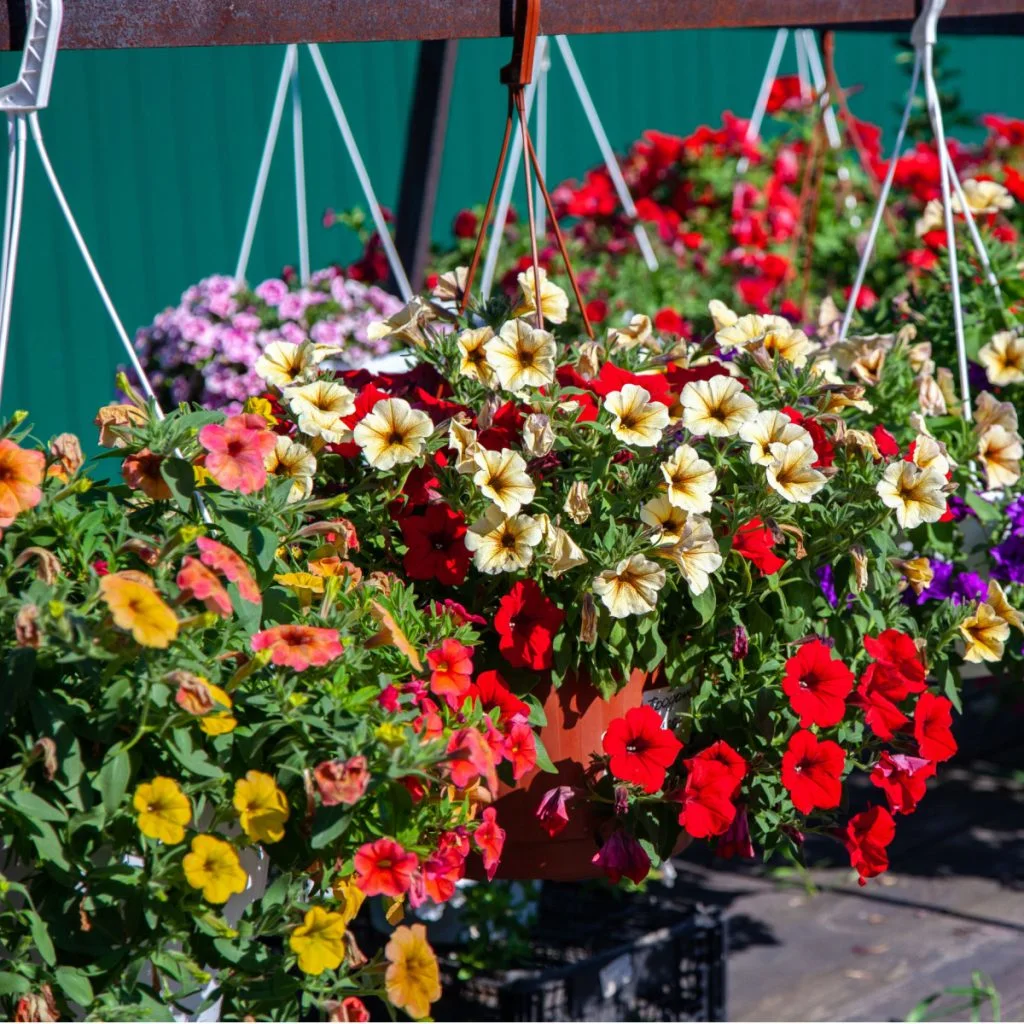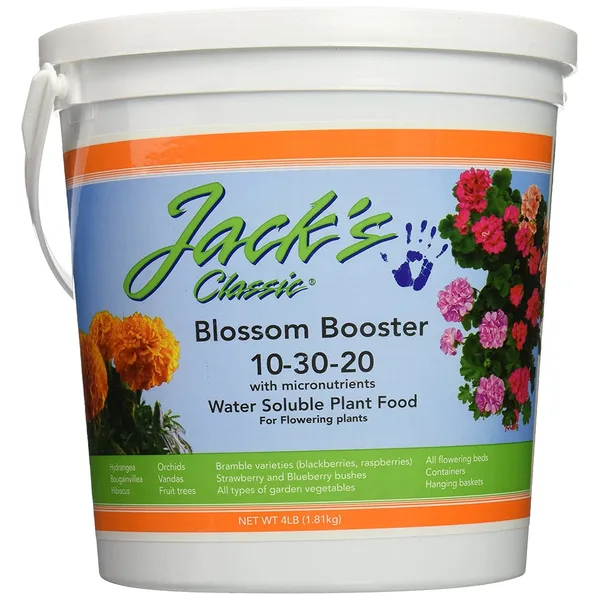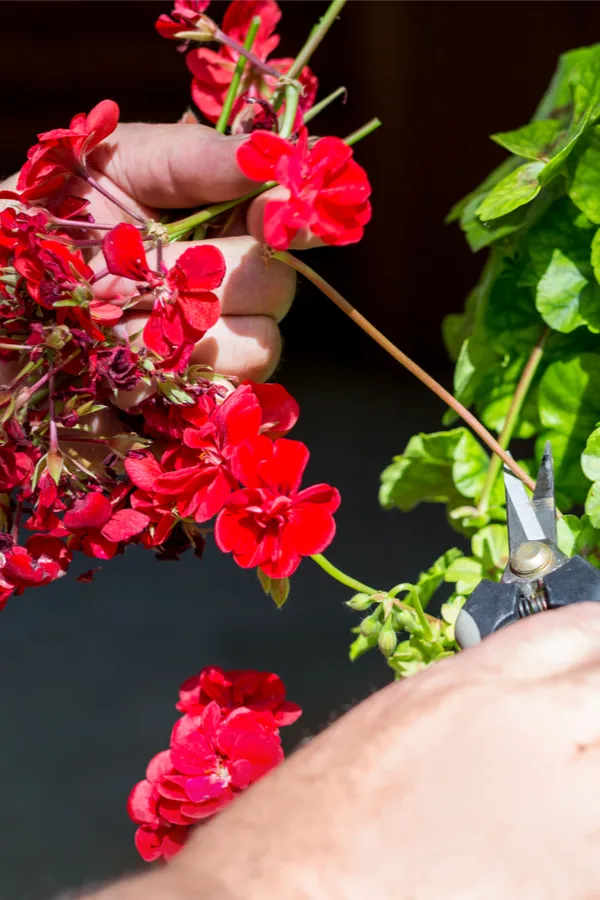Looking for a few simple tips and tricks to keep those just-purchased beautiful flowering hanging baskets blooming strong all summer long?
Spring is in full force – and hanging baskets are flying out of nurseries and garden centers like nobody’s business. But for many, the struggle to keep their baskets looking as full and healthy as they look right now all summer long is a tough one. But it doesn’t have to be that way!
Unfortunately, most baskets that are purchased or planted in the early spring don’t make it past mid-summer. In fact, sadly, some don’t even make it to late spring without their foliage fading, and their once plentiful blooms becoming more scarce with each passing day.

When hanging baskets do begin to fail, many gardeners assume they just need more water or fertilizer. And although those two needs are very important for their health, there are a few other issues that usually are a factor when plants fail before they should.
With that in mind – here is a look at 3 simple tips to keep your baskets blooming from spring til fall – and have you enjoying big color anywhere you place them!
3 Simple Tricks To Keep New Hanging Baskets Healthy, Strong & Blooming All Summer!
#1 Fertilizing Is A Must
More than anything else, if you want to keep your new baskets flowering – you need to fertilize. And regularly! Without adding additional energy and power to your hanging basket plants throughout the growing season, they simply will not be able to survive the entire summer.
The plants growing in a hanging basket have a limited amount of soil from which to absorb energy. Unfortunately, they have no ability to expand beyond the basket and find additional nutrients. That means fertilizing is a must. But how and when you fertilize is the real secret to blooming success.
Hanging baskets need to be fed a low, slow and steady stream of nutrients. If you provide plants with too much power too quickly, they will expand their roots and foliage too fast. The result will be a plant that outgrows its basket and stops blooming because of it. See our article: How To Fertilize Hanging Baskets.

How & When To Fertilize
With hanging baskets, liquid fertilizing options are the best choice. Liquid fertilizers absorb both through the roots of a plant and through its leaves. This double absorption means plants get the nutrients much easier than with granular applications.
It’s important to choose a fertilizer that has a higher amount of phosphorus and potassium than nitrogen. Nitrogen helps with growth, but phosphorus and potassium help with blooms! Affiliate Link: Jack’s Classic Blossom Booster 1.5 lbs, 10-30-20
To keep baskets growing and blooming strong, it’s far better to give a lower dose of nutrients more frequently. A light dose of fertilizer applied to your baskets every 10 to 14 days is best. This will feed the plants slowly with a constant dose of power. When using a commercial liquid fertilizer, mix at half of the recommended strength to keep the dose light.
#2 Watering Your New Hanging Baskets To Keep Them Blooming
Insufficient or irregular watering can play a major role in the early demise of hanging baskets. Because the soil hangs out in the open in a basket, it dries out much faster than flowers growing in the ground.
When flowering plants dry out, their roots and leaves shrink, shrivel and curl from the stress. Left dry long enough, they will begin to brown and die off. But even when water is eventually supplied to the plant, the shriveled roots make it hard for the plant to absorb it.
Listen To Our Podcast Below On Hanging Basket Care!
Get in the habit of watering plants at a consistent time of day. Early morning is by far the best time to water. It not only helps plants take on the upcoming stress and heat of the day, but there is less chance of damage from the sun’s rays burning the foliage.
Check plants daily to see if the soil is completely drying out. Especially on exceptionally hot or windy days. If so, you may need to water once in the morning and again in the evening.
Make Sure Your Plants Can Drain Excess Water
Just as important as making sure your plants stay hydrated is to make sure they don’t become waterlogged. All too often, excess water from rain or watering gets trapped in the baskets, unable to drain through.
When this occurs, the roots of the plant become swollen. As they swell, they become unable to take in moisture or nutrients. It sounds almost impossible since there is so much water around them, but when roots become waterlogged, they actually can’t take in food or water.
Always make sure your hanging baskets have a few drainage holes in their bottom. If they only have one in the center, drill out a couple more with a 1/2 inch drill bit. With multiple holes, if a single drain hole becomes blocked, water can still drain away.
#3 Deadhead Your Plants Regularly
The longer you allow dying and decaying blooms to stay on your baskets, the longer it will take new blooms to form and unfurl. That is why removing those old blooms is a huge key to keeping your baskets flowering strong!

When old blooms are left on a plant, not only do they become an eyesore, they use up valuable resources. Resources that should instead be going to new growth and more blooms.
Remove dead and dying blooms from your hanging baskets on a regular basis. This is also a great practice for container and bedding plants as well. Doing this will keep the plant’s energy and resources focused on creating new blooms and better looking baskets.
Here is to keeping those new hanging baskets you just purchased blooming big – and looking just as good right up until fall! For tips on keeping container plants healthy & strong, see our article: How To Water Containers & Hanging Baskets – The One Simple Secret To Success!
This Is My Garden
Follow Our Facebook Page For Great Gardening Tips And Advice! This Is My Garden Facebook Page
This Is My Garden is a garden website created by gardeners, for gardeners. Jim and Mary Competti have been writing gardening, DIY and recipe articles and books and speaking for over 15 years from their 46 acre Ohio farm. They publish three articles every week, 52 weeks a year. Sign up today to follow via email, or follow along!
